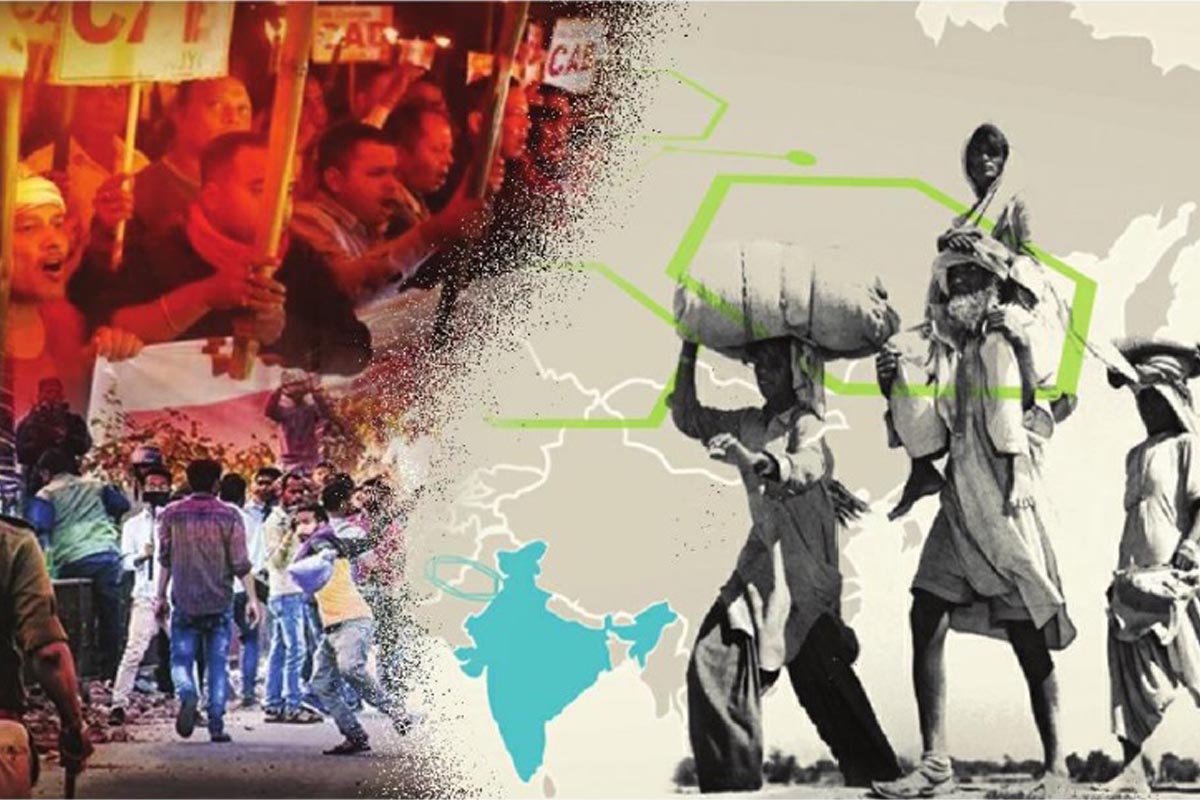Man kills wife, her brother after a fight in East Delhi
As the police team reached the spot, it soon got to know that a double-murder had been committed.
East Delhi’s Seelampur witnessed a protest in the middle of the night. Now, the protest has become sporadic to university campuses of Jamia Millia and Madras University.

(SNS)
With the passing of the Citizenship Amendment Bill (CAB), there have been episodes of several casualties, large-scale protests across the nation, heated exchanges in Parliament, and gross damage to public property. East Delhi’s Seelampur witnessed a protest in the middle of the night. Now, the protest has become sporadic to university campuses of Jamia Millia and Madras University. The bill initiated by the ruling government is critically accused of pushing the Muslims to the brink of marginalisation. On the international front, the United Nations’ human rights body slammed and termed it ‘fundamentally discriminatory’, undermining India’s commitment to international law.
Japanese PM Shinzo Abe has put off the annual India-Japan summit, which was scheduled recently in Guwahati. Bangladesh Foreign Minister AK Abdul Momen cancelled his visit to India. Now, all of a sudden, the CAA is allegedly equated to Pakistan’s blasphemous laws which trigger persecution of religious minorities in the international arena. Rahul Gandhi is of the opinion that anyone supporting the CAA is destroying India’s foundation. West Bengal, Kerala, Madhya Pradesh, Chhattisgarh and Punjab are vehemently against the CAA, citing the bill as discriminatory and unconstitutional.
However, in the context of migration, be it internal or external, the larger issue is getting hibernated, and short-lived protests seem to be futile. The political rhetoric and narratives are not ostensibly sensing the public sentiment. It has spilled the beans of larger issues of migration and its discourse has been lopsided and half-hearted. When the issue of migration is examined, certain reports reveal that one in three Indians is a migrant, whatever the nature of migration may be. The unheard voice of the migrant population is felt as they are deprived from social, cultural and political identity.
Advertisement
Lack of Public Distribution System (PDS), Aadhaar Card and voting card are synonyms of their marginalisation. Girls and women are prey to sexual exploitation and children are not free from the clutches of malnutrition. Again, double criminations come to the fore when a migrant is a woman, disabled and belongs to lower social strata of the society. Urbanization in India is the outcome of demographic explosion and poverty-induced rural-urban migration. Subsequently, it has developed dichotomies in urban India which is a gargantuan task for the government to handle. The Economic Survey of India, 2017 finds that inter-state migration in India was close to 9 million annually between 2011 and 2016.
It is predicted that India’s urban population is expected to grow from 410 million in 2014 to 814 million by 2050. However, NSSO (2018) has explored that barely 2.4 per cent of India’s workforce are equipped with vocational skills. States like Uttar Pradesh and Bihar constitute the higher amount of migration where the size of daily wages and basic healthcare facilities remain low. Seasonal migrated population face double woes as they run into low-paying, hazardous and informal market jobs. The International Migrant Stock 2019 claims that when it comes to external migration, the amount of migration to India has declined from 5.24 million in 2015 to 5.15 million in 2019. Bangladesh has been the leading country of origin for the migrant population in India.
The CAB assures to provide citizenship to religious minorities from Pakistan, Bangladesh and Afghanistan. History has shown the alarming situation when Argentina, Brazil, Mexico and Venezuela were unable to cope with unplanned migration in providing adequate facilities. However, the narrative here is somewhat ignored or has been coloured from time to time to weigh political gains.
Since migration is a cross-cutting issue, bringing Sustainable Development Goals (SDGs), 2030 to the discussion has become imperative. Its core principle “leave no one behind” directly points to the issue of migration. In India, a new urban vision with judicious amount of migration is needed, failing which, the demographic dividend will peter out. To give meaning to the political rhetoric and narratives, recognition for migrants is to be fully maintained.
(The writer is an Assistant Professor at Symbiosis Institute of Media and Communication, Symbiosis International (Deemed University), Pune)
Advertisement